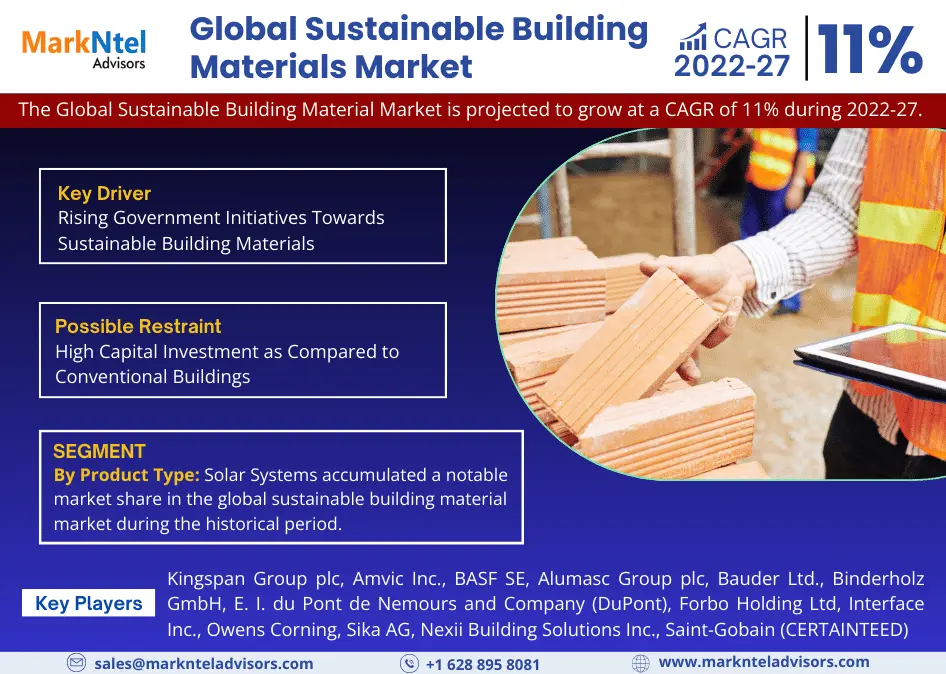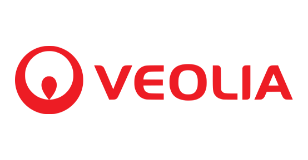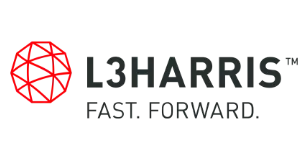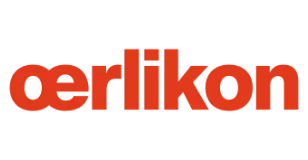
Global Sustainable Building Materials Market Research Report : Forecast (2022-27)
By Product Type (Exterior), Windows, Roofing, Others (Doors, Sidings, etc.)) (Interior, Floorings, Insulation, Building Systems) Solar Systems, Others,(Composites Coatings, Others ...(Finishing, Framing, etc.)), By End User (Residential, Non-Residential, Commercial, Institutional, Others (Industrial, Hospitality, etc.)), By Region (North America, South America, Europe, Middle East & Africa, Asia-Pacific), By Company (Kingspan Group plc, Amvic Inc., BASF SE, Alumasc Group plc, Bauder Ltd., Binderholz GmbH, E. I. du Pont de Nemours and Company (DuPont), Forbo Holding Ltd, Interface Inc., Owens Corning, Sika AG, Nexii Building Solutions Inc., Saint-Gobain (CERTAINTEED), Chengdu Onekin Green Building Materials Co. Ltd, Soben International (Asia Pacific) Ltd) Read more
- Buildings, Construction, Metals & Mining
- Mar 2022
- Pages 243
- Report Format: PDF, Excel, PPT
Market Definition
Sustainable building materials are those materials that are made from renewable resources to reduce the environmental impact associated with fabrication, processing, installation, transportation, disposal, and recycling. They are employed in the address environmental challenges, including drastic climatic change, natural resource depletion, atmospheric pollution, contamination of freshwater resources, and loss of biodiversity. With the rapid construction of new green buildings across the globe as well as supportive government policies & initiatives, the demand for sustainable building materials is expected to proliferate in the upcoming years.
Market Insights
The Global Sustainable Building Material Market is projected to grow at a CAGR of 11% during the forecast period, 2022-27. The demand has been escalating on the backdrop of deepening the emphasis of numerous regional & country-level governments to ensure a smooth path for reducing greenhouse gas emissions. Further, these sustainable settings offer energy efficiency, low maintenance, durability, reduction in overall operational cost, and waste reduction over traditional buildings.
| Report Coverage | Details |
|---|---|
| Study Period | Historical Data: 2017-20 |
| Base Year: 2021 | |
| Forecast Period: 2022-27 | |
| CAGR (2022-2027) | 11% |
| Regions Covered | North America: US, Canada, Mexico |
| Europe: The UK, France, Germany, Italy, Spain, Rest of Europe | |
| Asia-Pacific: China, India, Japan, South Korea, Singapore, Rest of Asia Pacific | |
| South America: Brazil, Argentina, Rest of South America | |
| Middle East & Africa: UAE, Saudi Arabia, South Africa, Turkey Rest of Middle East and Africa | |
| Key Companies Profiled |
Kingspan Group plc, Amvic Inc., BASF SE, Alumasc Group plc, Bauder Ltd., Binderholz GmbH, E. I. du Pont de Nemours and Company (DuPont), Forbo Holding Ltd, Interface Inc., Owens Corning, Sika AG, Nexii Building Solutions Inc., Saint-Gobain (CERTAINTEED), Chengdu Onekin Green Building Materials Co. Ltd, Soben International (Asia Pacific) Ltd |
| Unit Denominations | USD Million/Billion |
In this regard, countries such as the US, Canada, Spain, the UK, China, India, Singapore, the UAE, and others have introduced green building standards to bring resilience in the construction industry for increasing the number of new sustainable residential or non-residential structures. Consequently, the demand for sustainable building material, including insulated solutions, walls, sidings, panels, floors, solar systems, etc., is expected to witness a noticeable incline during 2022-27.
Additionally, the increasing number of sustainable building certification organizations, such as DGNB (German Sustainable Building Council), LEED (Leadership in Energy and Environmental Design), BREEAM (Building Research Establishment's Environmental Assessment Method), HQE (The Haute Qualité Environnementale), Energy Star, etc., have created benchmarks for attaining sustainability in construction buildings.
Therefore, with the emerging trend of zero-carbon energy buildings along with the establishment of various green building councils, the Global Sustainable Building Materials market would experience substantial growth prospects over the forecast period.
Impact of Covid-19 on the Global Sustainable Building Material Market
The advent of COVID-19 led to a significant decline in the demand for sustainable building materials during 2020. The construction industry was one of the worst-hit industries among others. The stringent imposition of mobility measures led to a low number of active construction projects.
In addition, the uncertainty posed by the global pandemic led to a downfall in the real estate sector as a result of low consumer confidence. Consequently, it resulted in the cancellation & halt of the ongoing construction projects, including green building projects. The halt in the projects also led to delays in project deliveries.
Therefore, in 2020, the demand for sustainable building materials declined sharply. In addition, the gradual revival of the construction industry contributed to the recovery of demand for sustainable building materials in 2021. Hence, the impact of COVID-19 on sustainable building materials would diminish with the resumption of ongoing & new sustainable buildings across the globe.

Market Segmentation
By Product Type:
- Exterior
- Interior
- Solar Systems
- Others
Of them all, Solar Systems accumulated a notable market share in the global sustainable building material market during the historical period. The increasing awareness among building contractors & consumers, along with more readily available solar systems globally, have created a market need for solar systems. To minimize the operational costs associated with power generation for the building has stimulated the demand for solar systems in this segment.
Furthermore, the declining prices of Solar Photovoltaic (PV) systems in nations, such as Asia-Pacific, North America, etc., have increased the deployment of solar systems. Moreover, the environmental benefits & high long-term value given by solar systems have further heightened its demand among the real estate developers, which has augmented the sustainable building material market. For instance:
- In 2021, Clarion Partners, a US-based investment manager, and Taconic Partners, a real-estate developer, completed the installation of 917 kilowatts of solar photovoltaic panels in 1,416 units’ residential apartment complex at Eastchester Heights, in the Bronx, the US. The installed solar system claims to produce 1.1 million kilowatt-hours of clean electricity to power nearly 114 individual buildings.
By End User:
- Residential
- Non-residential
Among these, the Residential end-user acquired a significant market share in the Global Sustainable Building Material market during the historical period. The rising demand for energy-efficient residential structures has gained notable momentum for sustainable building materials for residential settings such as apartments, villas, flats, housing complexes, communities, etc.
Besides, the usage of renewable power sources, proper insulation, recyclable materials for window panes, doors, roofing, coupled with sustainable coating for water-proofing & to prevent leakage, etc., has broadened the scope of the Sustainable Building Materials market globally. Moreover, the growing emphasis on promoting sustainability in residential building construction as well as the need for energy accreditation of buildings, have also contributed to market growth.
In this regard, the Government of India has provided various incentive schemes in its different states for Indian Green Building Council (IGBC)-rated buildings in India. Therefore, it is projected that these initiatives would further accelerate the global sustainable building material market growth during 2022-27.
- In 2022, Built Green Canada launched its Net Zero Energy+ program for single-family new homes. The program aims to introduce new concepts & techniques for developing high-performance & net-zero new construction projects in Canada. In the aftermath, the program would create numerous opportunities for sustainable building materials in the country.
Regional Landscape
- North America
- South America
- Europe
- The Middle East & Africa
- Asia-Pacific
Geographically, North America witnessed a sizeable growth in the Sustainable Building Material market, owing to its proactive efforts to mitigate adverse environmental effects by the construction industry. As a result, the region has seen a surge in the demand for sustainable building materials in the historical years. Moreover, the supportive government policies to catalyze the establishment of new sustainable building has mandated the need for sustainable building materials across the region. Besides, the region has several players providing sustainable building materials. Therefore, to endure competition, the key players in the industry have adopted different key business strategies, such as acquisitions, expansions, product launches, and collaborations. In regard to this, the demand for sustainable building materials has seen an elevating trend in the historical years, and the trend is expected to sustain in the forecast years as well.
- In 2021, Saint-Gobain North America, one of the largest building materials companies in the world, launched a partnership with ecomedes, a developer of a sustainable building products platform, to provide a comprehensive sustainability data portal for Saint-Gobain's SageGlass & CertainTeed brands, which provide more than 1,000 products.
Recent Developments by Leading Companies
- In 2021, Sika acquired American Hydrotech Inc., based in the US, and its associate Hydrotech Membrane Corporation, based in Canada. With these acquisitions, Sika would benefit from Hydrotech’s experience in providing green roofs with the use of liquid membranes. It would help Sika to extend its portfolio of full-system roofing & waterproofing solutions.
- In 2021, Sika signed an agreement to acquire MBCC Group, one of the leading suppliers of construction chemicals globally. Through this acquisition, the company aims to expand its product portfolio of sustainable construction products.
- In 2020, Nexii Building Solutions, a Canadian green construction technology company, announced to build two full-scale plants in Canada, one in Alberta & the other in Toronto, Ontario. In addition, the company plans to build a manufacturing facility in Pennsylvania. These next three plants will be estimated to cost approximately USD58 million together to produce Nexii's green building technologies.
Market Dynamics:
Key Driver
- Rising Government Initiatives Towards Sustainable Building Materials
The rising push by the government to adopt sustainable buildings for limiting & reducing greenhouse gas emissions has accelerated the demand for sustainable building materials. Further, the governments of several countries, including the US, China, Spain, and India, have enacted various initiatives that provide upfront discounts & tax exemptions, among other benefits. Consequently, this has resulted in the establishment of new green buildings globally, which has propagated the demand for sustainable building materials across the globe.
- In 2020, the European Commission launched the Climate Target Plan 2030 to cut net greenhouse gas emissions in the European Union (EU) by at least 55% by 2030. To achieve this, the EU has identified the construction sector as one of the crucial parts of the plan. The plan involves the reduction of buildings' greenhouse gas emissions by 60%, their final energy consumption by 14%, and energy consumption for heating and cooling by 18%. In addition, the EU has promoted the utilization of sustainable building materials to scale this optimum sustainability of the buildings in the region.
Possible Restraint
- High Capital Investment as Compared to Conventional Buildings
In comparison to conventional building materials, sustainable building materials have a higher upfront cost, which has discouraged many buyers from switching. Furthermore, these materials don't provide any immediate financial benefits, yet their costs can be recovered over the long run. Due to this, the end-users have not been investing in buying sustainable building materials. Consequently, this has led to low adoption of sustainable building materials by real estate developers, individual builders, homeowners, among others.
Key Questions Answered in the Market Research Report:
- What are the overall statistics or estimates (Overview, Market Size- By Value, Forecast Numbers, Segmentation, Market Shares) of the Global Sustainable Building Material Market?
- What are the region-wise industry size, growth drivers, and challenges?
- What are the key innovations, opportunities, current & future trends, and regulations in the Global Sustainable Building Material Market?
- Who are the key competitors, their key strengths & weaknesses, and how do they perform in the Global Sustainable Building Material Market based on the competitive landscape?
- What are the key results derived from surveys conducted during the Global Sustainable Building Material Market study?
Frequently Asked Questions
- Introduction
- Product Definition
- Research Process
- Market Segmentation
- Assumptions
- Executive Summary
- Impact of COVID-19 on Global Sustainable Building Material Market
- Global Major Sustainable Building Material Market Certification Benchmarks
- DGNB (German Sustainable Building Council)
- LEED (Leadership in Energy and Environmental Design)
- BREEAM (Building Research Establishment's Environmental Assessment Method)
- HQE (The Haute Qualité Environnementale)
- Energy Star
- Global Sustainable Building Material Market Trends & Insights
- Global Sustainable Building Material Market Dynamics
- Drivers
- Challenges
- Global Sustainable Building Material Market Hotspots & Opportunities
- Global Green Initiatives for Green Building Materials
- Global Sustainable Building Material Market Outlook, 2017-2027
- Market Size & Analysis
- By Revenues (USD Billion)
- Market Share & Analysis
- By Product Type
- Exterior
- Windows
- Roofing
- Others (Doors, Sidings, etc.)
- Interior
- Floorings
- Insulation
- Building Systems
- Solar Systems
- Others
- Composites
- Coatings
- Others (Finishing, Framing, etc.)
- Exterior
- By End User
- Residential
- Non-Residential
- Commercial
- Institutional
- Others (Industrial, Hospitality, etc.)
- By Region
- North America
- South America
- Europe
- Middle East & Africa
- Asia-Pacific
- By Company
- Revenue Shares
- Competition Characteristics
- By Product Type
- Market Size & Analysis
- North America Sustainable Building Material Market Outlook, 2017-2027
- Market Size & Analysis
- By Revenues (USD Billion)
- Market Share & Analysis
- By Product Type
- By End User
- By Country
- The US
- Canada
- Mexico
- The US Sustainable Building Material Market Outlook, 2017-2027
- Market Size & Analysis
- By Revenues (USD Billion)
- Market Share & Analysis
- By End User
- Market Size & Analysis
- Canada Sustainable Building Material Market Outlook, 2017-2027
- Market Size & Analysis
- By Revenues (USD Billion)
- Market Share & Analysis
- By End User
- Market Size & Analysis
- Mexico Sustainable Building Material Market Outlook, 2017-2027
- Market Size & Analysis
- By Revenues (USD Billion)
- Market Share & Analysis
- By End User
- Market Size & Analysis
- Market Size & Analysis
- South America Sustainable Building Material Market Outlook, 2017-2027
- Market Size & Analysis
- By Revenues (USD Billion)
- Market Share & Analysis
- By Product Type
- By End User
- By Country
- Brazil
- Argentina
- Rest of South America
- Brazil Sustainable Building Material Market Outlook, 2017-2027
- Market Size & Analysis
- By Revenues (USD Billion)
- Market Share & Analysis
- By End User
- Market Size & Analysis
- Argentina Sustainable Building Material Market Outlook, 2017-2027
- Market Size & Analysis
- By Revenues (USD Billion)
- Market Share & Analysis
- By End User
- Market Size & Analysis
- Market Size & Analysis
- Europe Sustainable Building Material Market Outlook, 2017-2027
- Market Size & Analysis
- By Revenues (USD Billion)
- Market Share & Analysis
- By Product Type
- By End User
- By Country
- The UK
- France
- Germany
- Italy
- Spain
- Rest of Europe
- The UK Sustainable Building Material Market Outlook, 2017-2027
- Market Size & Analysis
- By Revenues (USD Billion)
- Market Share & Analysis
- By End User
- Market Size & Analysis
- France Sustainable Building Material Market Outlook, 2017-2027
- Market Size & Analysis
- By Revenues (USD Billion)
- Market Share & Analysis
- By End User
- Market Size & Analysis
- Germany Sustainable Building Material Market Outlook, 2017-2027
- Market Size & Analysis
- By Revenues (USD Billion)
- Market Share & Analysis
- By End User
- Market Size & Analysis
- Italy Sustainable Building Material Market Outlook, 2017-2027
- Market Size & Analysis
- By Revenues (USD Billion)
- Market Share & Analysis
- By End User
- Market Size & Analysis
- Spain Sustainable Building Material Market Outlook, 2017-2027
- Market Size & Analysis
- By Revenues (USD Billion)
- Market Share & Analysis
- By End User
- Market Size & Analysis
- Market Size & Analysis
- Middle East and Africa Sustainable Building Material Market Outlook, 2017-2027
- Market Size & Analysis
- By Revenues (USD Billion)
- Market Share & Analysis
- By Product Type
- By End User
- By Country
- UAE
- Saudi Arabia
- South Africa
- Turkey
- Rest of Middle East and Africa
- UAE Sustainable Building Material Market Outlook, 2017-2027
- Market Size & Analysis
- By Revenues (USD Billion)
- Market Share & Analysis
- By End User
- Market Size & Analysis
- Saudi Arabia Sustainable Building Material Market Outlook, 2017-2027
- Market Size & Analysis
- By Revenues (USD Billion)
- Market Share & Analysis
- By End User
- Market Size & Analysis
- South Africa Sustainable Building Material Market Outlook, 2017-2027
- Market Size & Analysis
- By Revenues (USD Billion)
- Market Share & Analysis
- By End User
- Market Size & Analysis
- Turkey Sustainable Building Material Market Outlook, 2017-2027
- Market Size & Analysis
- By Revenues (USD Billion)
- Market Share & Analysis
- By End User
- Market Size & Analysis
- Market Size & Analysis
- Asia Pacific Sustainable Building Material Market Outlook, 2017-2027
- Market Size & Analysis
- By Revenues (USD Billion)
- Market Share & Analysis
- By Product Type
- By End User
- By Country
- China
- India
- Japan
- South Korea
- Singapore
- Rest of Asia Pacific
- China Sustainable Building Material Market Outlook, 2017-2027
- Market Size & Analysis
- By Revenues (USD Billion)
- Market Share & Analysis
- By End User
- Market Size & Analysis
- India Sustainable Building Material Market Outlook, 2017-2027
- Market Size & Analysis
- By Revenues (USD Billion)
- Market Share & Analysis
- By End User
- Market Size & Analysis
- Japan Sustainable Building Material Market Outlook, 2017-2027
- Market Size & Analysis
- By Revenues (USD Billion)
- Market Share & Analysis
- By End User
- Market Size & Analysis
- South Korea Sustainable Building Material Market Outlook, 2017-2027
- Market Size & Analysis
- By Revenues (USD Billion)
- Market Share & Analysis
- By End User
- Market Size & Analysis
- Singapore Sustainable Building Material Market Outlook, 2017-2027
- Market Size & Analysis
- By Revenues (USD Billion)
- Market Share & Analysis
- By End User
- Market Size & Analysis
- Market Size & Analysis
- Global Sustainable Building Material Market Key Strategic Imperatives for Growth & Success
- Competition Outlook
- Competition Matrix
- Brand Specialization
- Target Markets
- Target End Users
- Research & Development
- Strategic Alliances
- Strategic Initiatives
- Company Profiles
- Kingspan Group plc
- Amvic Inc.
- BASF SE
- Alumasc Group plc
- Bauder Ltd.
- Binderholz GmbH
- E. I. du Pont de Nemours and Company (DuPont)
- Forbo Holding Ltd
- Interface Inc.
- Owens Corning
- Sika AG
- Nexii Building Solutions Inc.
- Saint-Gobain (CERTAINTEED)
- Chengdu Onekin Green Building Materials Co. Ltd
- Soben International (Asia Pacific) Ltd
- Competition Matrix
- Disclaimer
MarkNtel Advisors follows a robust and iterative research methodology designed to ensure maximum accuracy and minimize deviation in market estimates and forecasts. Our approach combines both bottom-up and top-down techniques to effectively segment and quantify various aspects of the market. A consistent feature across all our research reports is data triangulation, which examines the market from three distinct perspectives to validate findings. Key components of our research process include:
1. Scope & Research Design At the outset, MarkNtel Advisors define the research objectives and formulate pertinent questions. This phase involves determining the type of research—qualitative or quantitative—and designing a methodology that outlines data collection methods, target demographics, and analytical tools. They also establish timelines and budgets to ensure the research aligns with client goals.
2. Sample Selection and Data Collection In this stage, the firm identifies the target audience and determines the appropriate sample size to ensure representativeness. They employ various sampling methods, such as random or stratified sampling, based on the research objectives. Data collection is carried out using tools like surveys, interviews, and observations, ensuring the gathered data is reliable and relevant.
3. Data Analysis and Validation Once data is collected, MarkNtel Advisors undertake a rigorous analysis process. This includes cleaning the data to remove inconsistencies, employing statistical software for quantitative analysis, and thematic analysis for qualitative data. Validation steps are taken to ensure the accuracy and reliability of the findings, minimizing biases and errors.

4. Data Forecast and FinalizationThe final phase involves forecasting future market trends based on the analyzed data. MarkNtel Advisors utilize predictive modeling and time series analysis to anticipate market behaviors. The insights are then compiled into comprehensive reports, featuring visual aids like charts and graphs, and include strategic recommendations to inform client decision-making









